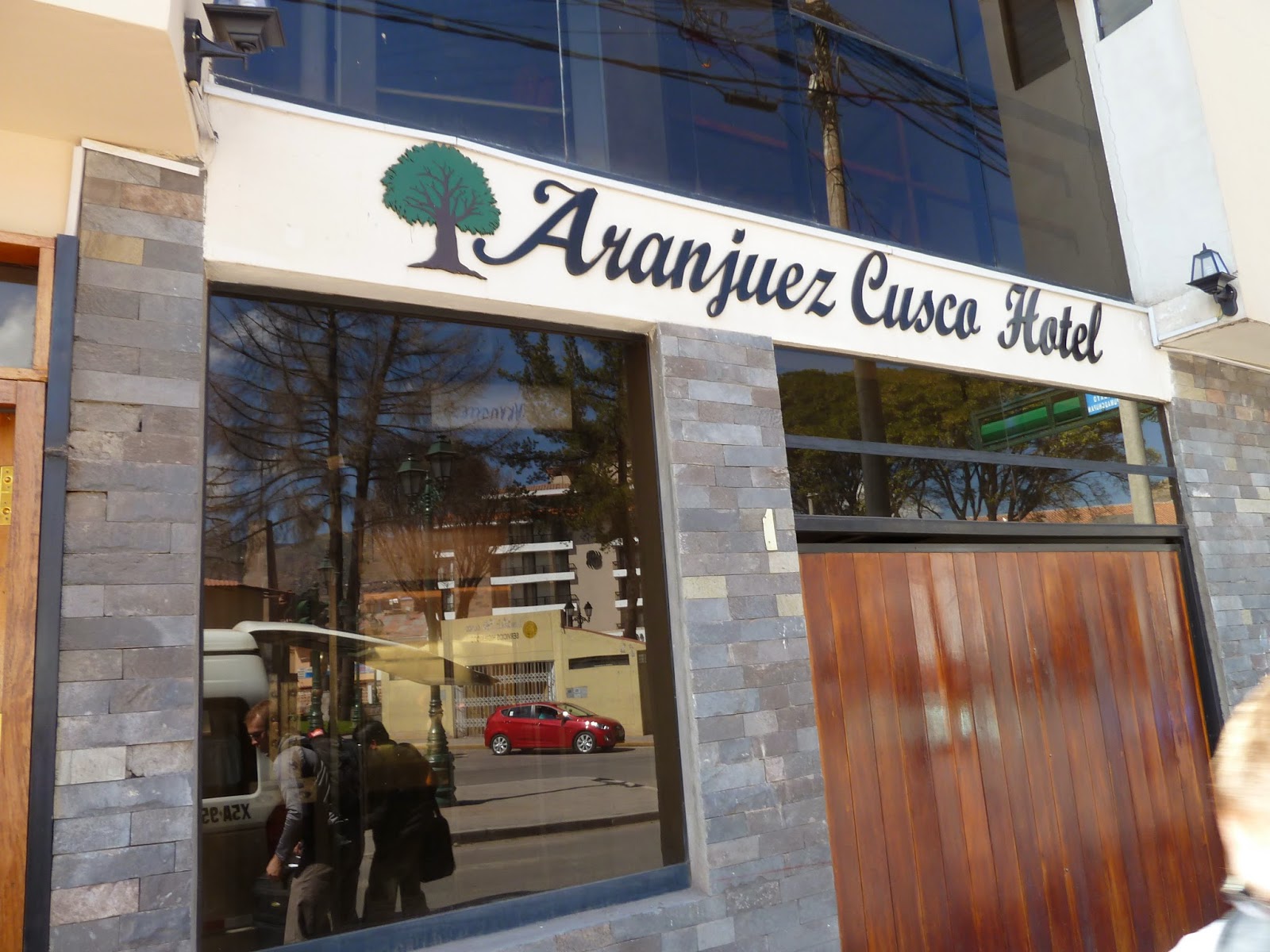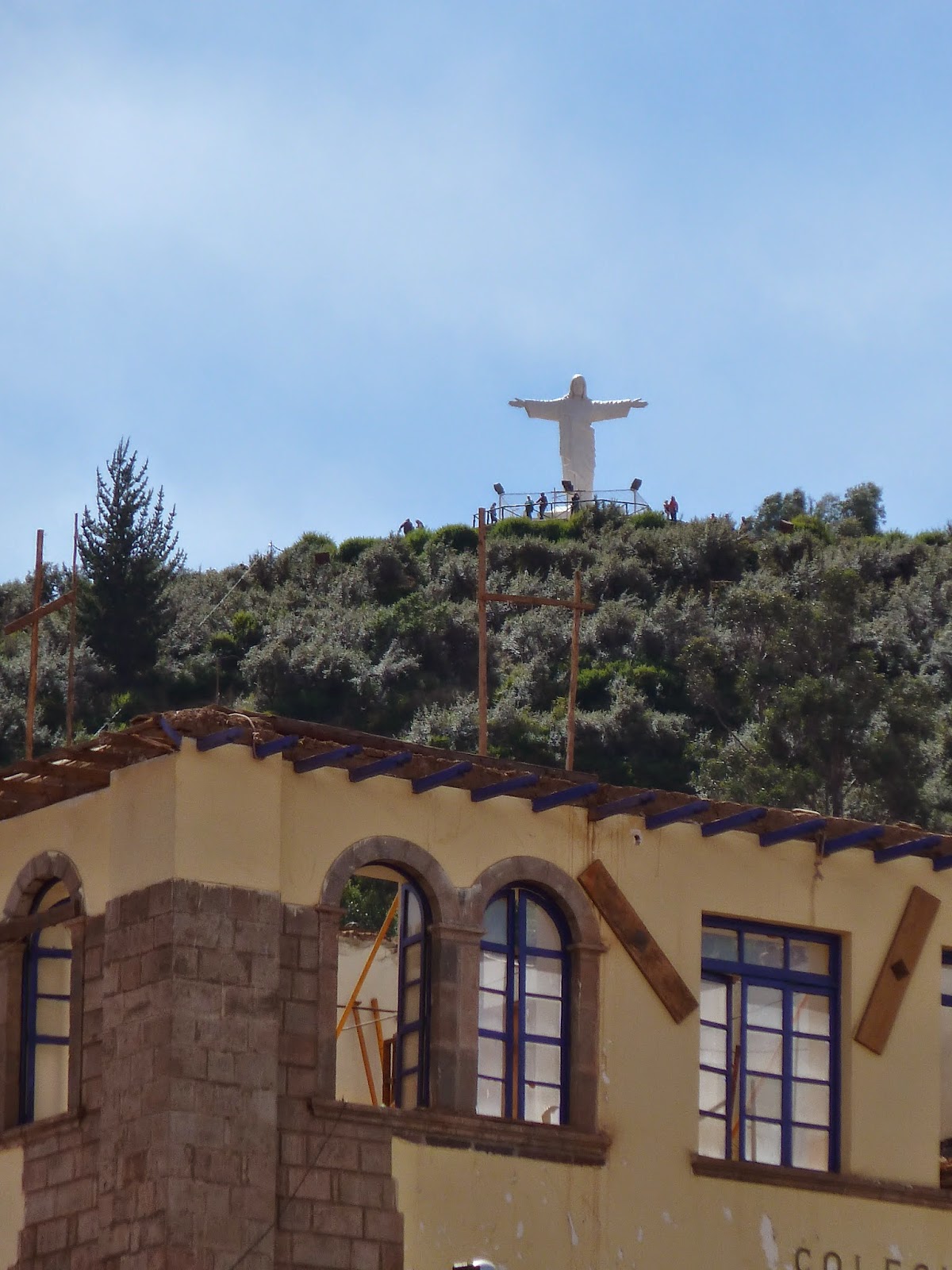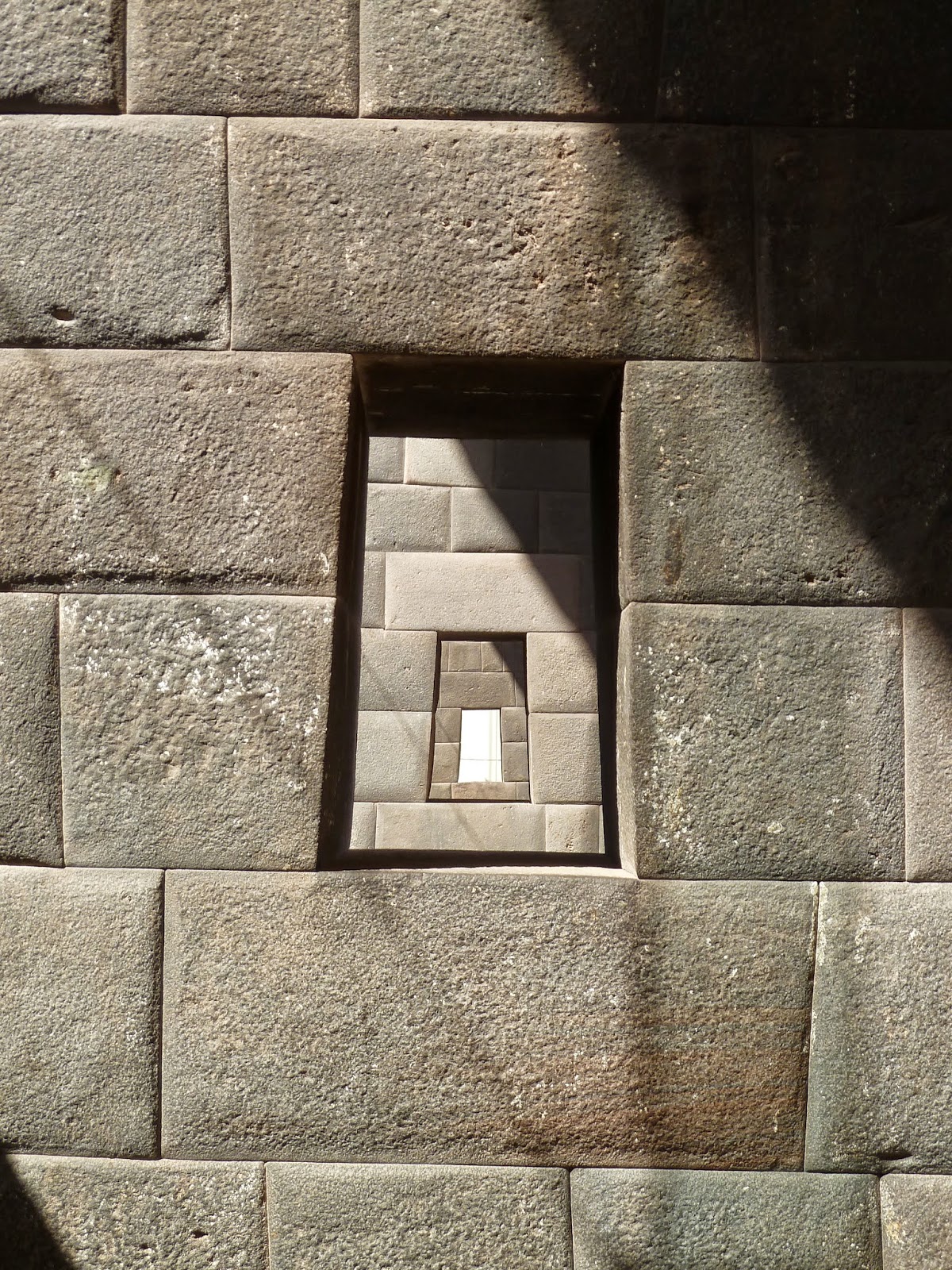The following photos are shots from around Cusco and show what a beautiful city it is. There is no question that the tourist dollar has gone a long way to help the economy in this part of Peru! This sacred city was the capital on the Inca empire and continues to be historical capital of Peru. Javier said that there are several stakes of the LDS church in Cusco, which is a city of about 500,000. We were first ushered into the city by the statue of Atahualpa, (1497 - 1533), the last sovereign emperor of the Inca Empire. The golden statue of in the Plaza de Armas represents Pachacutec, Inca ruler from 1438-1471.
Tuesday, August 26, 2014
Cusco - Capital City
Our one-hour Star Peru Flight from Lima to Cusco, (it was back of the airbus for us!) landed us in the capital city mid-morning where we were met by Javier from Moroni Tours. (Elder Nash, serving in the First Quorum of the Seventy of the LDS Church, had recommended him to us on a visit to Seoul.) Javier took us to our hotel and there we discussed our plans for the week. Although we didn't care much for the hotel he had arranged for us, we were grateful for the way he suggested changes to our itinerary and provided drivers and added tours that made our visit to the sacred valley much more enjoyable than we would have experienced on our own.
The following photos are shots from around Cusco and show what a beautiful city it is. There is no question that the tourist dollar has gone a long way to help the economy in this part of Peru! This sacred city was the capital on the Inca empire and continues to be historical capital of Peru. Javier said that there are several stakes of the LDS church in Cusco, which is a city of about 500,000. We were first ushered into the city by the statue of Atahualpa, (1497 - 1533), the last sovereign emperor of the Inca Empire. The golden statue of in the Plaza de Armas represents Pachacutec, Inca ruler from 1438-1471.
Stopping for lunch in the central plaza, we came upon a nice little Italian restaurant where we enjoyed non-traditional fare as we observed people strolling around the square. There were often street performances going on which helped us appreciate Peruvian music and dance. On our last day in Cusco, Michael purchased a couple of CD's from a very talented musician performing at the restaurant we were enjoying.
We took only one tour in the city to see the Inca Sun-Temple, Qorikancha and it's associated museum. This was the most important temple in the Inca Empire, and was built to honor, Inti, the sun God. It's walls and floors were once covered with sheets of solid gold and gold statues adorned the courtyard. The Spanish conquerors demolished the temple, ransacking all the gold, and built the Church of Santo Domingo upon it's sturdy foundation.
The Inca were master stone workers! This was well depicted at Qorikancha and is seen extensively throughout the valley. It is amazing to see how precisely they were able to carve granite stones with notches and holes in such a manner that the huge rocks would lock together like puzzle pieces by fitting them tightly together. In some instances, they would use gold rods or large "staples" to fasten adjoining stones together. Like Lego blocks, there was no mortar used between stones to fill gaps. In addition to the carving of these stones, their engineering feats included developing methods of transporting the enormous blocks from quarries which were often 100's of miles away. Their skills are truly one of the most intriguing wonders of ancient architecture! One such example of their workmanship is found on the narrow street of Hatunrumiyoc, near Plaza de Armas. Within the original Inca stone walls is found a large 12-sided stone which fits snugly within it's surrounding blocks.
A few of the relics found in the museum were quite interesting, such as the wooden locking mechanism, the elongated skulls, and the skulls with surgical holes in them - evidence of advanced medical skills. It was customary for the Incas to bury their dead in a seated fetal position - sometimes within a large pot.
The following photos are shots from around Cusco and show what a beautiful city it is. There is no question that the tourist dollar has gone a long way to help the economy in this part of Peru! This sacred city was the capital on the Inca empire and continues to be historical capital of Peru. Javier said that there are several stakes of the LDS church in Cusco, which is a city of about 500,000. We were first ushered into the city by the statue of Atahualpa, (1497 - 1533), the last sovereign emperor of the Inca Empire. The golden statue of in the Plaza de Armas represents Pachacutec, Inca ruler from 1438-1471.
Labels:
Ancient Ruins,
LDS,
Museums and Art,
Peru,
Restaurant,
Temple
Subscribe to:
Post Comments (Atom)

.JPG)
























































No comments:
Post a Comment